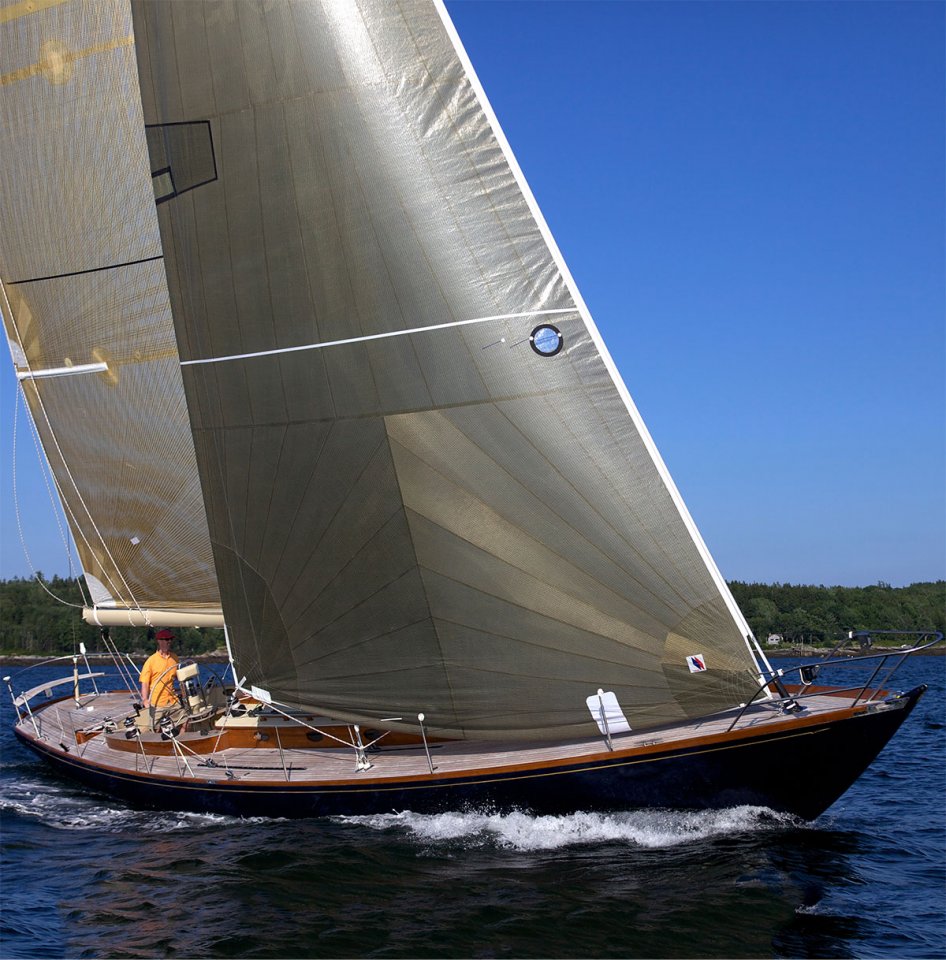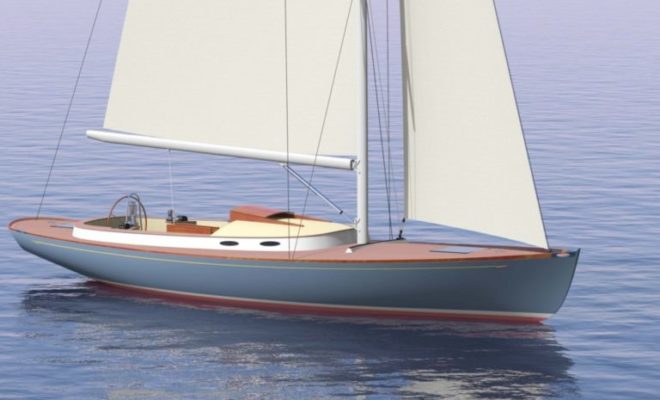The 8 Rules of Spirit-of-Tradition Yacht Design
The key to a successful SOT design (that is short for Spirit of Tradition) is to set your sights on interpreting a specific vernacular, as they say in traditional architecture. And never take your eye off that design ball. Whether it’s a slavish recreation of hull and style, right down to the wood trim details, or whether it’s a looser interpretation, coherence of concept is essential. If you begin mixing and matching styles, the whole thing will fall apart. Be careful. Be respectful.
Given your understanding of that, we can distill the SOT design flow down to 8 simple rules:
1) Above all, she must be pretty. There’s no point in designing an ugly boat. Ever.
2) The design should reflect back to an established traditional vernacular. That said, there’s a wide range of styles to draw from. For better or worse, most SOT designs seem to be strongly influenced by the twenty years each side of 1900. And by the long-ended, narrow yachts created by the International and Universal Rules. These are the mid-1960’s Jaguars and mid-1940’s Ferraris that seem to influence everything in automotive design, but for boats. However, opportunities for differing vernaculars are large. Pilot cutters, American workboats, sandbaggers, British “plank-on-edge” cutters; and we’re just scratching the surface.
3) Performance, performance, performance: Great sailing qualities must be included, or what’s the point? So use the advances in materials technology to improve the ballast/displacement ratio, lighten the rig and the ends of the boat. Employ modern deck hardware to make her easy to sail and fast. Use modern developments in sail handling to allow short-handed sailing—while a deck-full of strapping young men in striped jerseys looks great on the old gaffers, they’re hard to find and expensive to maintain!
4) Modern underbody: Reduce the wetted surface. Improve the maneuverability and control; use fin keels and spade rudders and easy, fast hull lines and sections. Don’t forget, we’re doing a modern boat here. We can be smart below the waterline and beautiful above.
5) Get the details right. Don’t be satisfied with drawing a concave sheer that kinda looks “traditional.” Get down close to the paper and squint along it (if you’re still using paper). Make sure all the lines of the boat work together. Remember how much effort designers and builders a hundred years ago put into creating a cohesive work of functional art. Do the same. Make sure the deck furniture is of a cohesive style—even if modern elements are introduced to make the cockpit more comfortable or functional, for example, use traditional joinery details to bring a sense of history.
6) Avoid mere copying and pasting traditional details onto a modern hull. Long overhangs don’t do the trick if they are artificially stretched out of a hull that’s basically a “plastic fantastic” modern shape. The boat’s lines must be fair and flowing. If you want a wineglass transom, make sure your hull has a sectional shape can logically terminate in that transom.
7) Other things being equal, low freeboard is attractive and traditional, but not the end- game. Back before we had hydraulic cranes and fold-down boarding platforms, every inch of freeboard was another inch you had to lift the fish, or coal, or ice, or people to get them aboard. If possible, keep the freeboard as low as you can, but when it’s necessary don’t let it ruin your day.
8) Take chances: Innovate! Remember, it’s the Spirit of Tradition. We’re advancing the art of sailing, not locking it down in a hundred-year-old musty coffin.
Check in tomorrow as we share some examples of Modern Classic designs.
Read more about Spirit-of-Tradition design at stephenswaring.com



